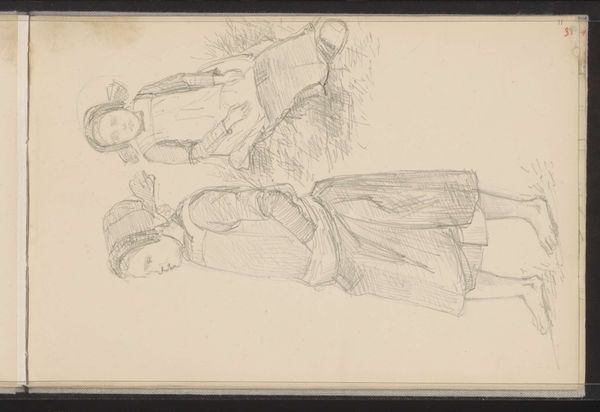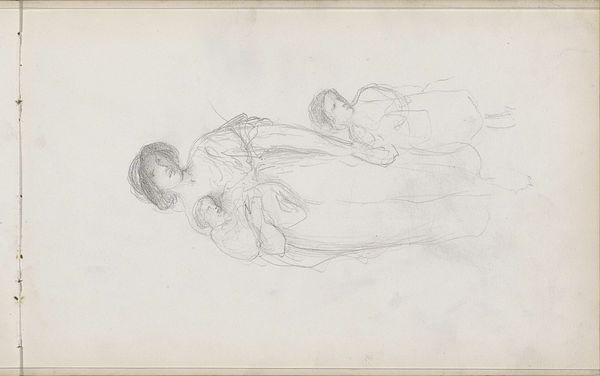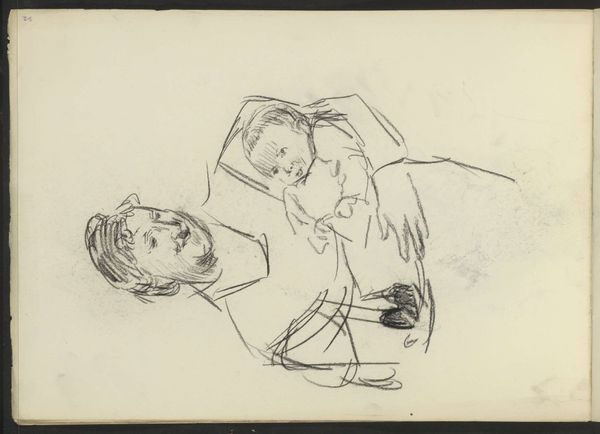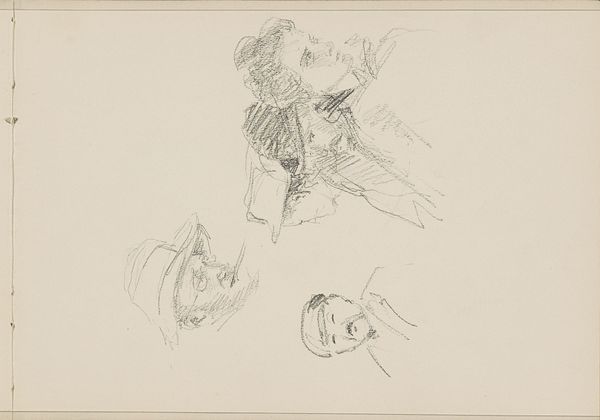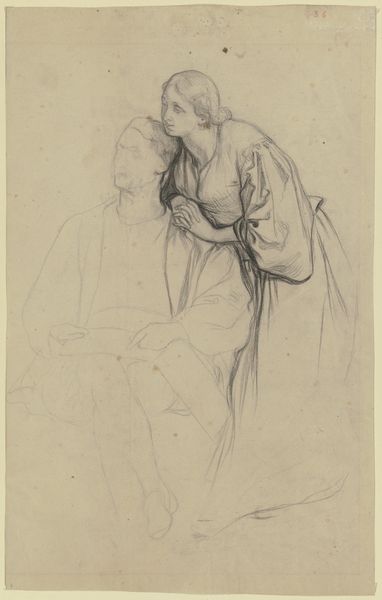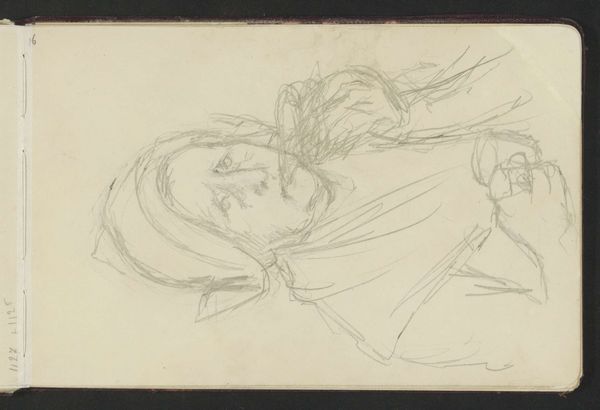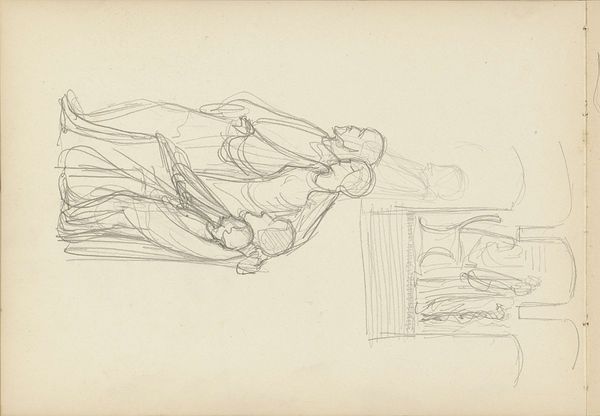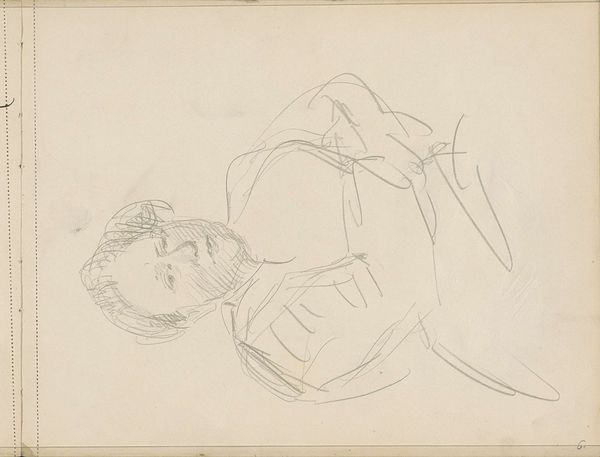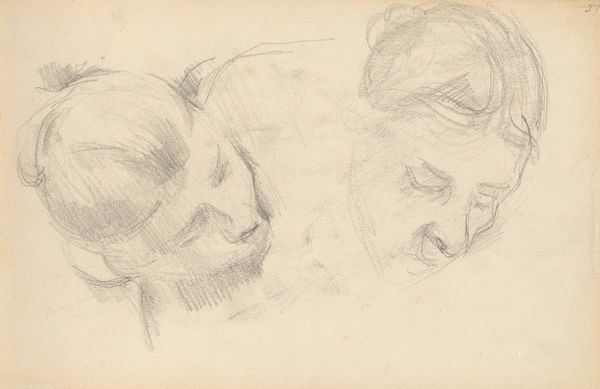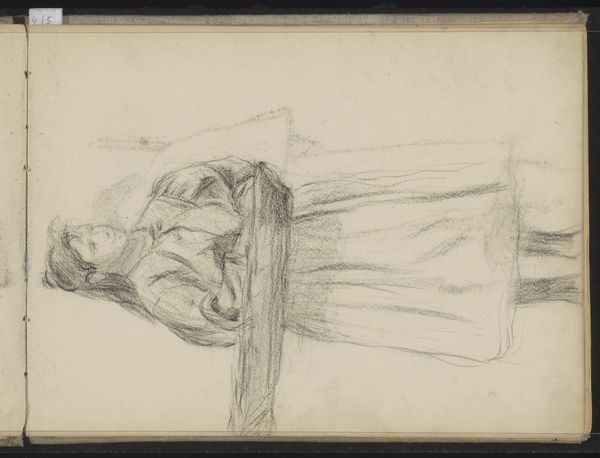
Meisje met de arm om de schouder van een kleiner meisje 1865 - 1913
amateur sketch
imaginative character sketch
light pencil work
pencil sketch
personal sketchbook
idea generation sketch
ink drawing experimentation
pen-ink sketch
sketchbook drawing
sketchbook art
Copyright: Rijks Museum: Open Domain
Curator: Here at the Rijksmuseum, we have "Girl with arm around the shoulder of a smaller girl" attributed to Bramine Hubrecht, though she created this artwork sometime between 1865 and 1913, we can’t be certain of the exact date. Editor: Oh, it looks like a captured moment, quick, fleeting. Makes me think of stolen childhoods, maybe sisters or close cousins…or just figures conjured up in her head one rainy afternoon. It’s beautiful, delicate, but also kinda ghostly, like a faded memory. Curator: It certainly resonates with those themes of sisterhood. In terms of understanding this piece, it's useful to situate Hubrecht’s work within the context of 19th century ideas around gender roles, and female identity as it relates to family structure, and social expectations. How women were viewed in the domestic sphere, and the expectations placed upon them as nurturers. Editor: Domestic spheres, social expectations…Yeah, yeah. But look at those eyes, right? Both of them are staring, or maybe looking right past you, beyond the frame. Whatever they see isn't something happy, I suspect. I wonder if she sees them as caught? Maybe that older sister would prefer another role altogether…like chasing adventures in a far away country. Curator: It would be fascinating to have insight into her thinking when the pencil touched the paper. You know, this work reflects the burgeoning discourse around female agency and representation within artistic practices that was expanding through much of Western Europe, so it begs many questions around that. Editor: Burgeoning discourses, hmmm, that just burst my bubble. I liked my sad ghostly girls. Can’t we just look at it and feel things, though? Like the way those lines sort of drift, and fade? Does it always have to have “meaning?” Or “fit into discourse”? Curator: It does encourage that more emotional experience of viewership that connects across social stratifications, of course! It is in examining work like Hubrecht’s in relation to its environment that helps expose the ways that art embodies and also critiques these systems. And no, of course, doesn't have to *only* have a “meaning". Editor: Critiques, embodies... I’m still caught up on those girls’ eyes, and maybe feeling something shift inside me about who and what has touched *my* shoulder, and where my hand has been laid on other's... but still and all... what I think? That those faraway girls send me the thought, perhaps everything, art, life, and love, is connected through all of us... Curator: Perhaps, after all, it’s just the nature of art, the subjectivity. Thanks for expanding my reading on this artwork!
Comments
No comments
Be the first to comment and join the conversation on the ultimate creative platform.
